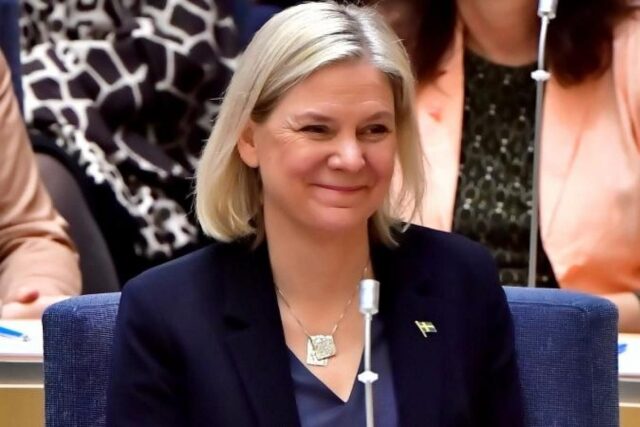Sweden is one of the world’s most highly developed post-industrial societies in the world. Unemployment is low and the economy strong. Public-private partnership is at the core of “the Swedish model”, which was developed by the Social Democrats, who governed for most of the 70 years up to 2006. There is an advanced welfare system, and their standard of living and life expectancy is among the highest in the world.
Relative to its population size, Sweden has taken in far more migrants than any other EU country since the beginning of the migration crisis in 2015. But this has put pressure on public services and prompted a surge in support for the far-right Sweden Democrats party. It is by far the last Nordic country to have a female prime minister. The current government leaders in Denmark and Finland are women, Mette Frederiksen and Sanna Marin.
Sweden’s first female prime minister Magdalena Andersson has been reappointed as the head of the country’s government after she resigned within hours of taking the job in less than a week. On 29th November 2021, politicians narrowly elected her again. She will be forming a one-party, minority government and her cabinet is expected to be named on Tuesday. Prime Minister Andersson party holds 100 seats in the 349-seat parliament. Prime Minister Andersson who was the finance minister before becoming Prime Minister has three main priorities when she forms the government — welfare, climate and combating violence.The Minister served as prime minister for seven hours before stepping down last week after the Greens left her two-party coalition. Their move followed the parliament’s rejection of her government’s budget proposal in favour of one presented by opposition parties including the right-wing populist Sweden Democrats. Further, Prime Minister Andersson will have to lead one of Sweden’s weakest governments in recent decades and govern on a budget in part formulated by three opposition parties, including the anti-immigration Sweden Democrats, whose gains over the past decade lie at the heart of Sweden’s political turmoil.









